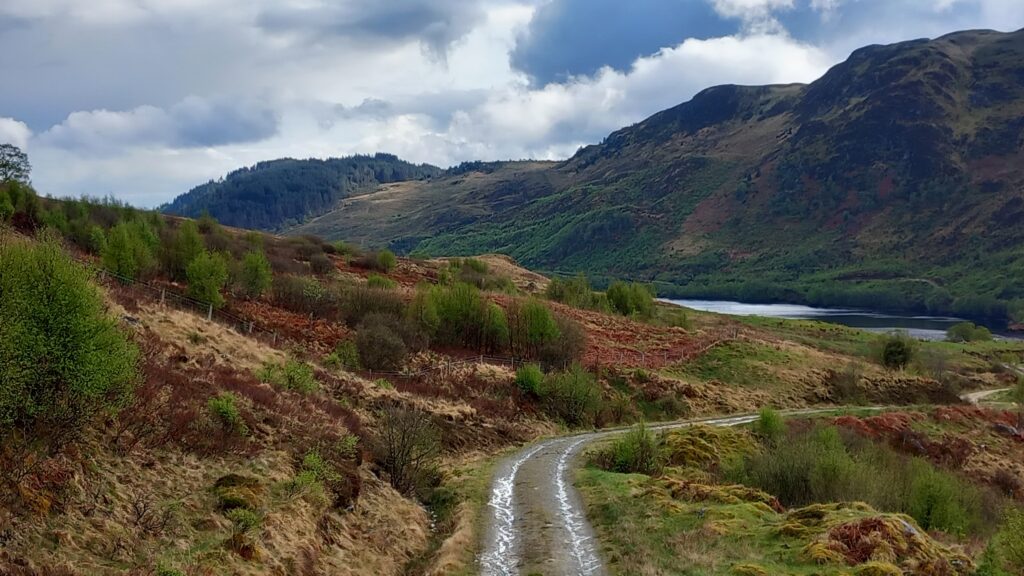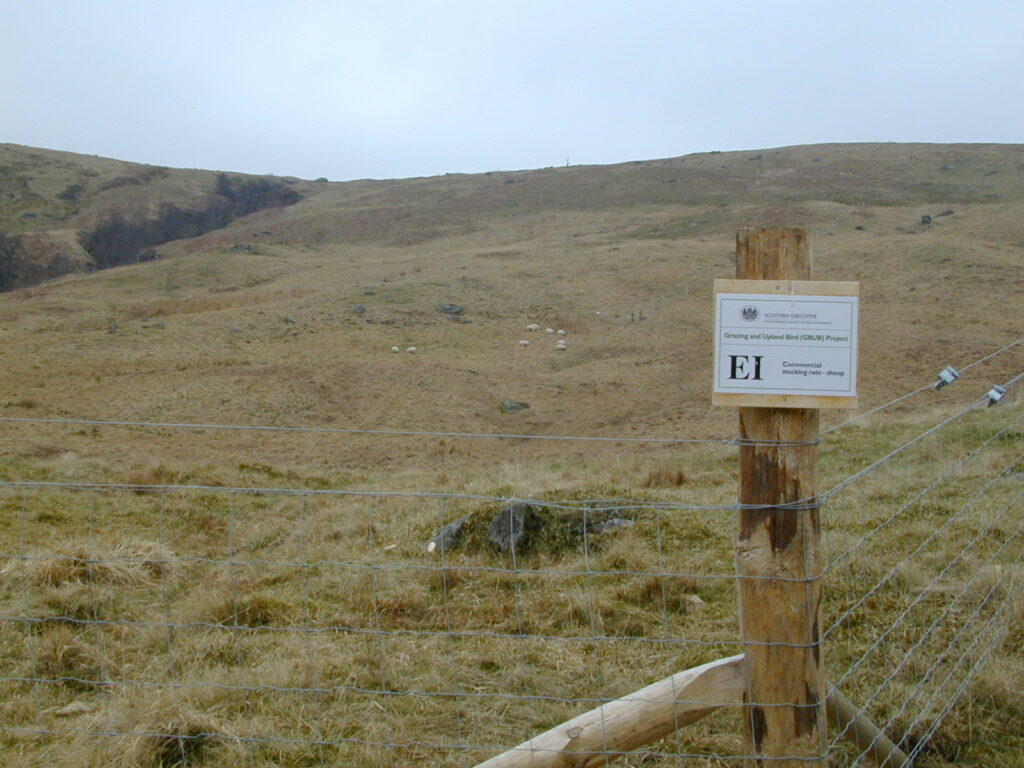Glen Finglas grazing project Publications
For further details of these publications, click the first author’s name (where activated) to send them an email.
Scientific Papers
- Pozsgai, G., Quinzo‐Ortega, L. & Littlewood, N.A. (2022) Grazing impacts on ground beetle (Coleoptera: Carabidae) abundance and diversity on semi‐natural grassland. Insect Conservation and Diversity, 15, 36-47. https://doi.org/10.1111/icad.12533
- Pakeman, R.J. & Fielding, D.A. (2021)Increased grazing drives homogenisation but reduced grazing increases turnover in upland habitat mosaics. Biodiversity and Conservation, 30, 4279-4295. https://doi.org/10.1007/s10531-021-02305-5
- Malm, L.E., Pearce‐Higgins, J.W., Littlewood, N.A., Karley, A.J., Karaszewska, E., Jaques, R., Pakeman, R.J., Redpath, S.M. & Evans, D.M. (2020) Livestock grazing impacts components of the breeding productivity of a common upland insectivorous passerine: Results from a long‐term experiment. Journal of Applied Ecology, 57, 1514-1523. https://doi.org/10.1111/1365-2664.13647
- Pakeman, R.J. & Fielding, D.A. (2020) A functional assessment of the impact of changing grazing management of upland grassland mosaics. Applied Vegetation Science, 23, 539-550. https://doi.org/10.1111/avsc.12504
- Pakeman, R.J., Fielding, D.A., Everts, L. & Littlewood, N. (2019) Long-term impacts of changed grazing regimes on the vegetation of heterogeneous upland grasslands. Journal of Applied Ecology. DOI: 10.1111/1365-2664.13420
- Smith, S., Johnson, D., Quin, S., Munro, K., Pakeman, R., Van Der Wal, R. & Woodin, S. (2015) Combination of herbivore removal and nitrogen deposition increases upland carbon storage. Global Change Biology, 21, 3036–3048.
- Evans, D., Villar, N., Littlewood, N., Pakeman, R., Evans, S., Dennis, P., Skartveit, J. & Redpath, S. (2015) The cascading impacts of livestock grazing in upland ecosystems: a 10-year experiment. Ecosphere, 6(3):1-15
- Smith, S.W., Woodin, S.J., Pakeman, R.J., Johnson, D. & Van Der Wal, R. (2014) Root traits predict decomposition across a landscape-scale grazing experiment. New Phytologist, 203, 851-862.
- Smith, S.W., Vandenberghe, C., Hastings, A., Johnson, D., Pakeman, R.J., van der Wal, R. & Wooding, S.J. (2014) Optimizing carbon storage within a spatially heterogeneous upland grassland through sheep grazing management. Ecosystems 17: 418-429.
- Villar N., Cornulier T., Evans D., Pakeman R., Redpath S. & Lambin X. (2014). Experimental evidence that livestock grazing intensity affects cyclic vole population regulation processes. Population Ecology 56: 55–61.
- Villar, N., Lambin, X., Evans, D., Pakeman, R. & Redpath, S. (2013) Experimental evidence that livestock grazing intensity affects the activity of a generalist predator. Acta Oecologica 49: 12-16.
- Littlewood, N.A., Pakeman, R.J. & Pozsgai, G. (2012) Grazing impacts on Auchenorrhyncha diversity and abundance on a Scottish upland estate. Insect Conservation and Diversity 5: 67-74.
- Prior, G.L., Evans, D.M., Redpath, S., Thirgood, S.J. & Monaghan, P. (2011) Birds bias offspring sex ratio in response to livestock grazing. Biology Letters 7: 958-960.
- Littlewood, N.A. & Stewart, A.J.A. (2011) Upland grassland Auchenorrhyncha at Glen Finglas, Perthshire. The Glasgow Naturalist 25(3): 61-65.
- Vandenberghe, C., Prior, G., Littlewood, N., Brooker, R. & Pakeman, R. (2009) Influence of livestock grazing on meadow pipit foraging behaviour in upland grassland. Basic and Applied Ecology 10: 662-670.
- Littlewood, N.A. (2008) Grazing impacts on moth diversity and abundance on a Scottish upland estate. Insect Conservation and Diversity. 1: 151-160.
- Douglas, D.J.T., Evans, D.M. & Redpath, S.M. (2008) Selection of foraging habitat and nestling diet by Meadow Pipits Anthus pratensis breeding on intensively grazed moorland. Bird Study 55: 290-296.
- Dennis, P., Skartveit, J., McCracken, D.I., Pakeman, R., Beaton, K., Kunaver, A. & Evans, D.M. (2008) The effects of livestock grazing on foliar arthropods associated with bird diet in upland grasslands of Scotland. Journal of Applied Ecology 45: 279-287
- Walsh, P.T., Evans, D.M., Hansell, M. & Ruxton, G.D. (2007) Factors influencing nocturnal egg turning frequency in the Meadow Pipit (Anthus pratensis). Bird Study 54:133-136
- Evans, D.M., Redpath, S.M., Elston, D.A., Evans, S.A. & Mitchell, R. (2006) To graze or not to graze? Sheep, voles, forestry and nature conservation in the British Uplands. Journal of Applied Ecology 43: 499-505
- Evans, D. M., Redpath, S. M., Evans, S. A., Elston, D. A., Gardner, C. J., Dennis, P. & Pakeman, R. (2006) Low intensity, mixed livestock grazing improves the breeding abundance of a common insectivorous passerine. Biology Letters 2: 636-638
- Evans, D.M., Redpath, S.M. & Evans S.A. (2005) Seasonal patterns in the productivity of Meadow Pipits in the uplands of Scotland. Journal of Field Ornithology 76: 245-251.
- Evans, D.M., Redpath, S.M., Evans S.A., Elston D.A. & Dennis, P. (2005) Livestock grazing affects the egg size of an insectivorous passerine. Biology Letters 1: 322-325.



